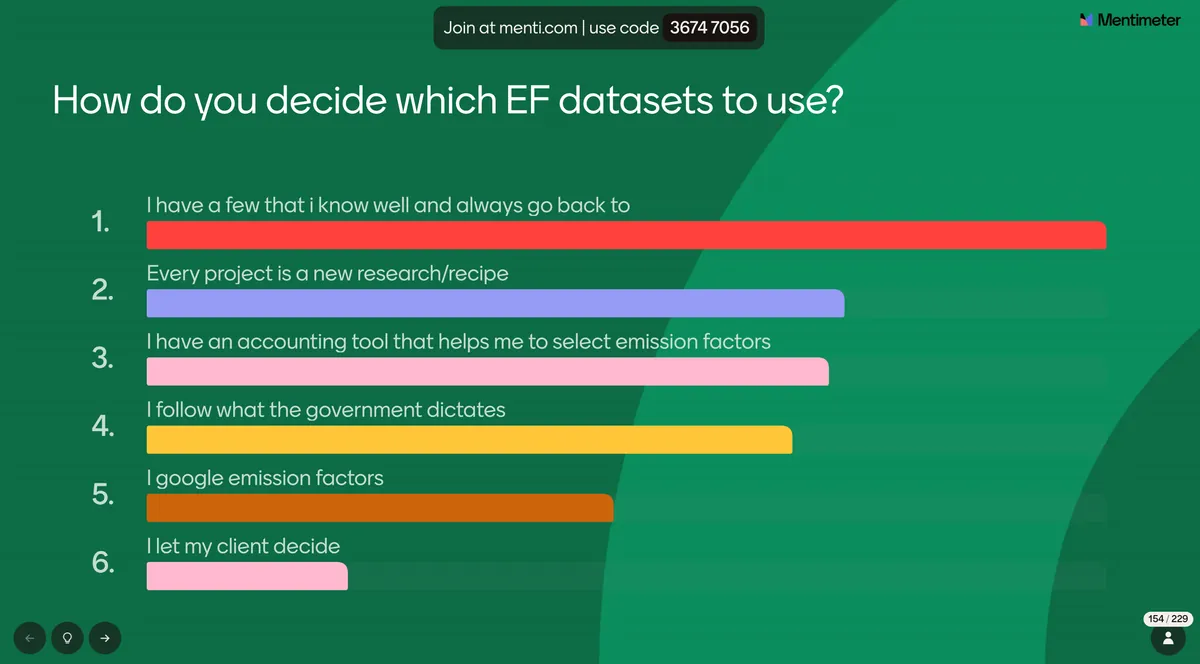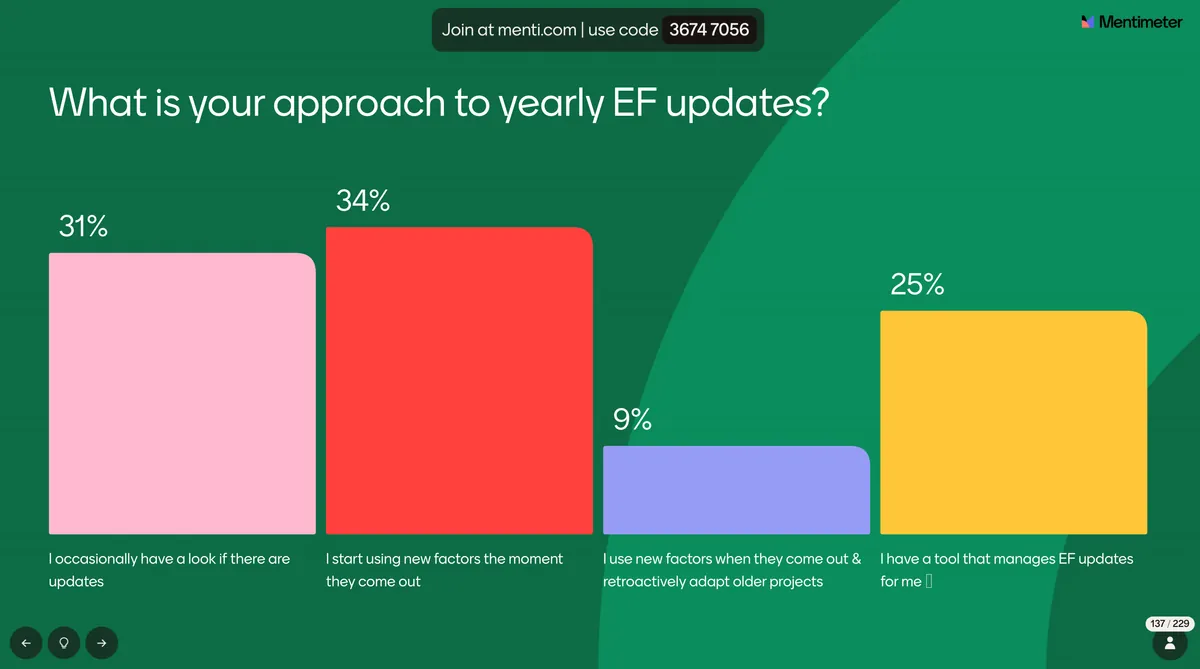Selecting emission factor databases for carbon accounting
Discover this blog post
Choosing the right emission factor (EF) datasets is one of the most complex, yet critical, steps in reliable carbon accounting. During our webinar in September 2025 Javier Mateos and Felix Hoornaert walked participants through how to build a compliant, auditable, and up-to-date EF strategy.
During this blog we dive deeper in how accurate emission factor management ensures:
- Compliancy with reporting standards like CSRD, GHG Protocol, and SBTi.
- Auditability, through transparent source selection and documentation.
- Recency, by working with the most up-to-date and corrected datasets.
“Good emission factor management is not just a data task, it’s what makes your carbon footprint verifiable and future-proof.” - Felix Hoornaert
Compliancy: understanding emission factor dimensions
Emission factors are more than just a single number. At Carbon+Alt+Delete we look at them as objects with multiple layers or relations. To ensure those relations are full regulated and compliant, data must be structured across six key dimensions:
- Greenhouse gas split - CO₂, CH₄, N₂O, HFCs, etc.
- Lifecycle stage split - upstream, operational, downstream.
- Market vs location-based electricity reporting.
- Energy component - including energy values in kWh.
- Fossil vs land emissions - land emissions, removals, and gross biogenics.
- Uncertainty - quantifying how reliable the data is.
Auditability: selecting and documenting EF sources
To support a smooth audit, it’s essential to record the source, version, and original unit of every EF used. Carbon+Alt+Delete suggests applying six evaluation criteria when selecting EF databases:
- Application range
- Representativeness (sector, geography, time)
- Ease of access
- Completeness
- Reliability (into the future)
- Internal consistency
These criteria help to avoid inconsistencies and ensure traceability when auditors review your footprint data. In the visual below, we see that the participants have different working methods on selecting the emission factors.

Recency: managing emission factor updates
Emission factors evolve constantly, sometimes with major corrections that impact historical results. Datasets like UK.gov or IEA often publish delayed or revised versions, meaning last year’s data might already be outdated by the time of use. According to the GHG Protocol, recalculation is required whenever improved data significantly affects your base year.
That’s why we at Carbon+Alt+Delete’s treat inventories as living things. In your inventory, recalculations are triggered automatically and transparently.
“Snapshots are for auditing. Inventories are for learning. We always keep both.”

Building your emission factor toolkit
Both Mentimeter polls show the importance of an emission factor toolkit for sustainability consultants. This makes it easier to start new projects with clients and stay up to date on the latest emission factor developments.
Carbon+Alt+Delete recommends assembling your emission factor toolkit with:
- 1-2 general-purpose databases (e.g., UK.gov, ADEME, EPA)
- 1 electricity dataset (AIB, IEA, IPCC)
- 1 spend-based database (e.g., Exiobase)
- 1-2 LCA datasets (Ecoinvent, GLEC)
- Sector-specific or custom factors for specialized cases
Conclusion
The webinar highlighted one clear takeaway: effective emission factor management is the backbone of credible carbon accounting.
By combining robust emission factor selection, version tracking, and automated recalculations, organizations can meet growing expectations for compliance, auditability, and scientific integrity.
The Carbon+Alt+Delete platform centralizes emission factor management automatically by tracking updates, recalculating inventories, and preserving snapshots for audit trails.
This approach removes the manual burden from experts while ensuring full transparency, traceability, and alignment with international standards.
This article was based on a Carbon Expert Series Webinar. Watch the full webinar on our YouTube channel.
About Carbon+Alt+Delete
We provide carbon accounting software for sustainability consultants and consultancies that guide companies towards net zero.
Curious to discover how our software can improve your carbon accounting services?
Feel free to reach out to [email protected] or book a meeting to talk to one of our experts here.
